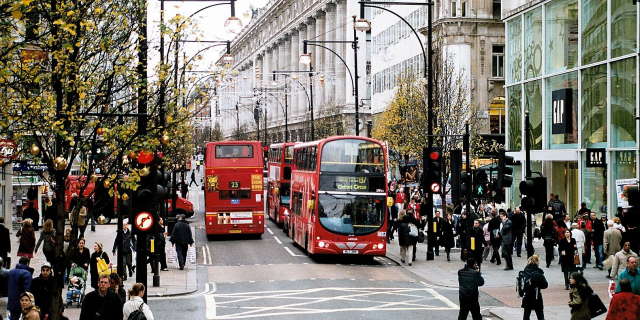Chinatown is an ethnic enclave in the City of Westminster, London, bordering Soho to its north and west, Theatreland to the south and east. The enclave currently occupies the area in and around Gerrard Street. It contains a number of Chinese restaurants, bakeries, supermarkets, souvenir shops, and other Chinese-run businesses. The first Chinatown was located in Limehouse in the East End.
The first area in London known as Chinatown was located in the Limehouse area of the East End of London.[1] At the start of the 20th century, the Chinese population of London was concentrated in that area, setting up businesses which catered to the Chinese sailors who frequented in Docklands. The area was known through exaggerated reports and tales of slum housing and (the then-legal) opium dens, rather than the Chinese restaurants and supermarkets of the current Chinatown. However, much of the area was damaged by aerial bombing during the Blitz in the Second World War, although a number of elderly Chinese still choose to live in this area. After the Second World War, however, the growing popularity of Chinese cuisine and an influx of immigrants from Hong Kong led to an increasing number of Chinese restaurants being opened elsewhere.
The present Chinatown, which is off Shaftesbury Avenue did not start to be established until the 1970s. Previously, it was a regular Soho area, run-down, with Gerrard Street the main thoroughfare. It was dominated by the Post Office, facing Macclesfield Street, and other major establishments were The Tailor & Cutter House, at 43/44, now a Chinese supermarket and restaurant, the Boulogne Restaurant, near the Wardour Street end, and by Peter Mario's Restaurant at the other end. Other businesses included a master baker's, the Sari Centre, Lesgrain French Coffee House, Harrison Marks' Glamour Studio, an Indian restaurant and various brothels. Probably the first Chinese restaurants opened in Lisle Street,[2] parallel to Gerrard Street, and more opened gradually; one of the first restaurants was Kowloon Restaurant. The Tailor & Cutter did not close down until around 1974. The area now has more than 80 restaurants.[3]
In 2005, the property developer Rosewheel proposed a plan to redevelop the eastern part of Chinatown. The plan was opposed by many of the existing retailers in Chinatown, as they believe that the redevelopment would drive out the traditional Chinese retail stores from the area and change the ethnic characteristic of Chinatown. In October 2013 and July 2018, the London Chinatown Community Centre (LCCC) organised a one-day shutdown in protest of violent tactics by immigration officers from the Home Office.[4][5]
The London Chinatown Community Centre (LCCC) has been housed in the Chinatown area since it was founded in 1980 by Dr Abraham Lue. The Centre claims to have received 40,000 people for help and assistance since its foundation. Located since 1998 on the second floor of 28-29 Gerrard Street, the Centre relocated to 2 Leicester Court in 2012, above the Hippodrome Casino.[6]
On 25 July 2016, a new Chinatown gate on Wardour Street was opened by Prince Andrew, the Duke of York. It was made by Chinese artisans and assembled in London. The gate is in the style of the Qing dynasty.[7]
There was a Chinese-style pavilion at Newport Place from the 1980s which was a popular meeting point, but it was demolished in 2016 after more than thirty years, despite protests. The development authorities had plans to renovate and enlarge the square.[8] The construction of a new pavilion at a different location was announced.[9]





































Add new comment